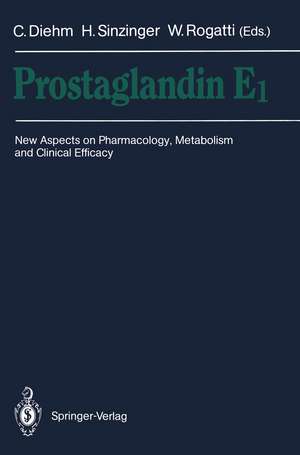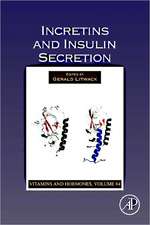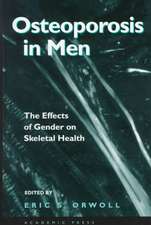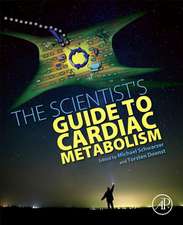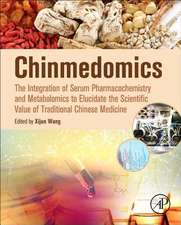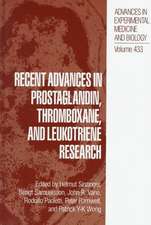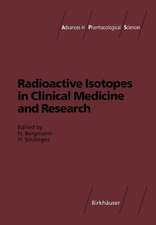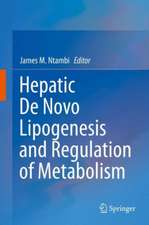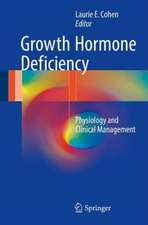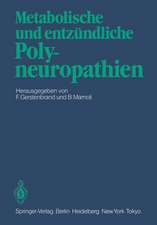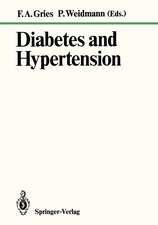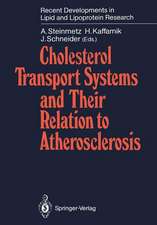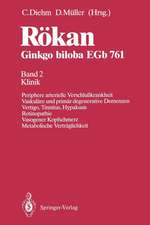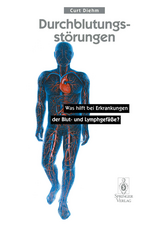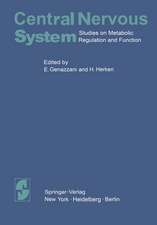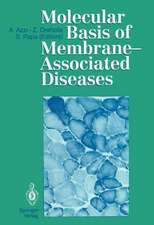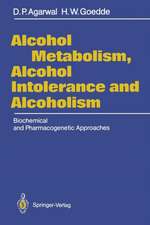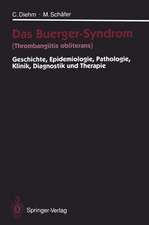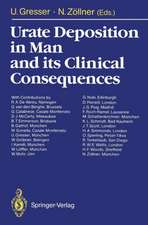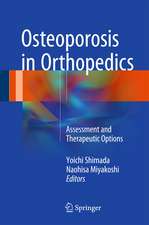Prostaglandin E1: New Aspects on Pharmacology, Metabolism and Clinical Efficacy
Editat de Curt Diehm, Helmut Sinzinger, Waltraud Rogattien Limba Engleză Paperback – 19 ian 1992
Preț: 706.77 lei
Preț vechi: 743.97 lei
-5% Nou
Puncte Express: 1060
Preț estimativ în valută:
135.24€ • 144.62$ • 112.76£
135.24€ • 144.62$ • 112.76£
Carte tipărită la comandă
Livrare economică 17 aprilie-01 mai
Preluare comenzi: 021 569.72.76
Specificații
ISBN-13: 9783540545248
ISBN-10: 3540545247
Pagini: 132
Ilustrații: XI, 117 p.
Dimensiuni: 155 x 235 x 7 mm
Greutate: 0.2 kg
Editura: Springer Berlin, Heidelberg
Colecția Springer
Locul publicării:Berlin, Heidelberg, Germany
ISBN-10: 3540545247
Pagini: 132
Ilustrații: XI, 117 p.
Dimensiuni: 155 x 235 x 7 mm
Greutate: 0.2 kg
Editura: Springer Berlin, Heidelberg
Colecția Springer
Locul publicării:Berlin, Heidelberg, Germany
Public țintă
ResearchDescriere
Although prostaglandin El (PGE ) has been clinically available for a long 1 time, only in recent years has its effectiveness in peripheral arterial occlusive disease been confirmed in controlled studies. Not surprisingly, the favour able results achieved both in patients with critical limb ischaemia and in those with intermittent claudication has stimulated research activities into the clinical pharmacology of this prostaglandin. As a consequence of these efforts, exciting new findings have revealed that PGE has anti thrombotic , endothelium-stabilizing and leucocyte-stabi 1 lizing properties as well as effects on lipid metabolism, all of which, quite apart from its well-known anti-aggregating and vasodilator effects, may add to the clinical efficacy of the substance. New data have also been gathered on the metabolism of PGE most b notably the detection of 13,14-dihydro-PGE a metabolite which was b recently isolated in humans following the administration of PGE . Being 1 biologically active, the pharmacodynamic spectrum of 13,14-dihydro-PGE 1 very closely resembles that of PGE . This finding may help to explain the 1 efficacy of PGE despite its rapid metabolization when given intravenously.
Cuprins
Cellular Sites of Action of Prostaglandins in the Cardiovascular System.- On the Metabolism and Pharmacokinetics of Prostaglandin E1 Administered by Intra-arterial or Intravenous Infusions.- Actions of PGE1 PGE0 and 15-keto-PGE1 on Vessel Tone In Vitro.- 13,14-dihydro-PGE1 (PGE0) but not 15-keto-PGE1 is a Potent Inhibitor of Human Platelet and Neutrophil Activation.- Comparable Inhibitory Action of PGE1 and 13–14-dihydro-PGE1 on Smooth Muscle Cell Activity and Extracellular Matrix Production.- PGE1 and 13,14-dihydro-PGE1 Increase Low-Density Lipoprotein Receptors and Improve Arterial Wall Lipid Metabolism.- Effect of Intra-arterial and Intravenous Application of Prostaglandin E1 on Neutrophil Function in Peripheral Arterial Occlusive Disease.- A Comparison of Different Dosages of Intra-arterial and Intravenous Administered Prostaglandin E1 in Healthy Volunteers.- Transcutaneous Oxygen Pressure at Different Dosages of Intravenous Prostaglandin E1 in Patients with Severe Arterial Occlusive Disease: A Double-Blind, Placebo-Controlled Study.- Transcutaneous PO2 During Intra-arterial and Intravenous PGE1 Infusion in Patients with Critical Limb Ischaemia.- Effects of Intravenous PGE1 on Blood Flow and Microcirculation: A Double-Blind, Placebo-Controlled Study in Patients with Critical Limb Ischaemia.- Therapeutic Efficacy of Intravenous Prostaglandin E1 Versus Pentoxifylline in Patients with Intermittent Claudication.- Adjuvant Intravenous PGE1 Treatment After Profundaplasty for Limb Salvage.
